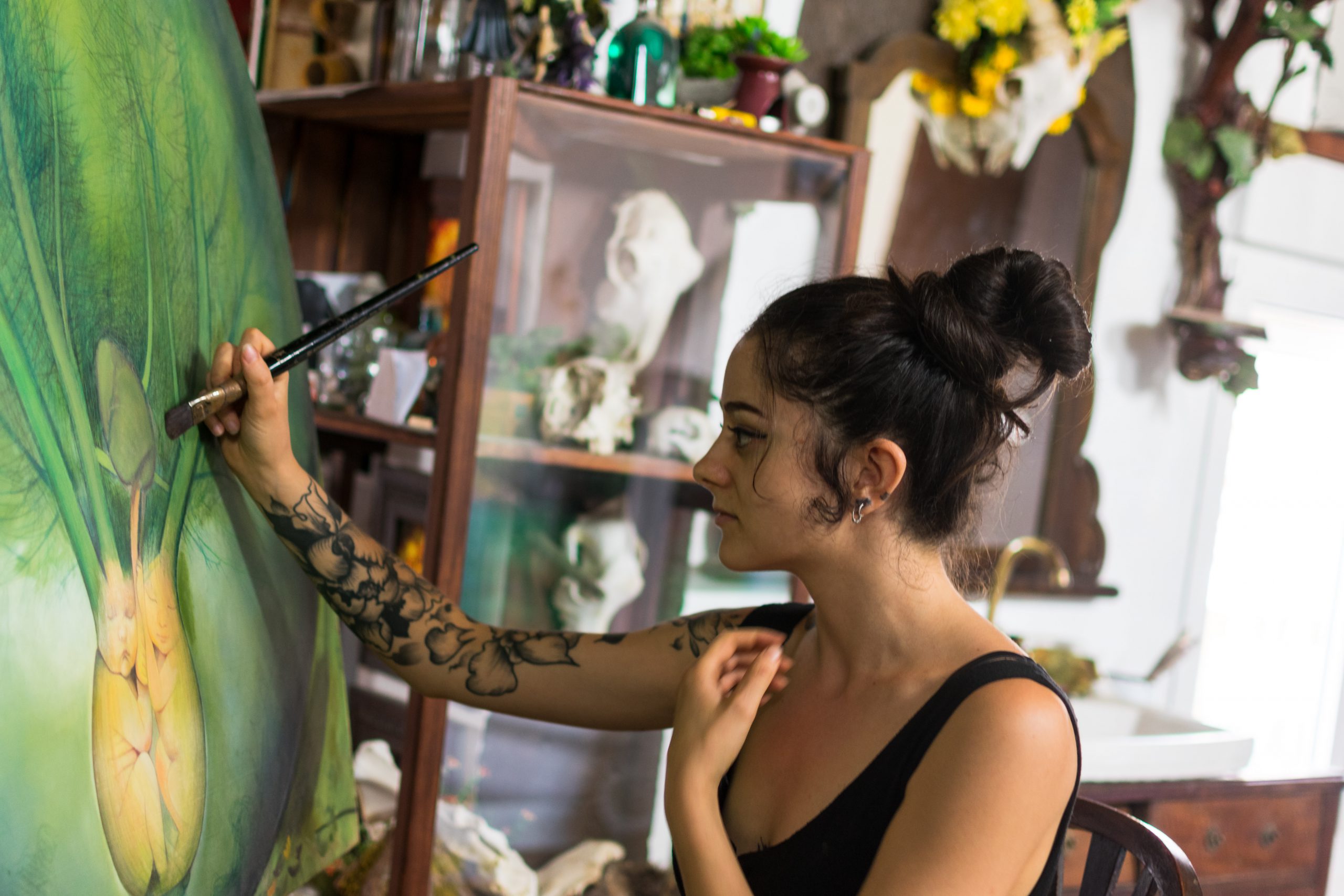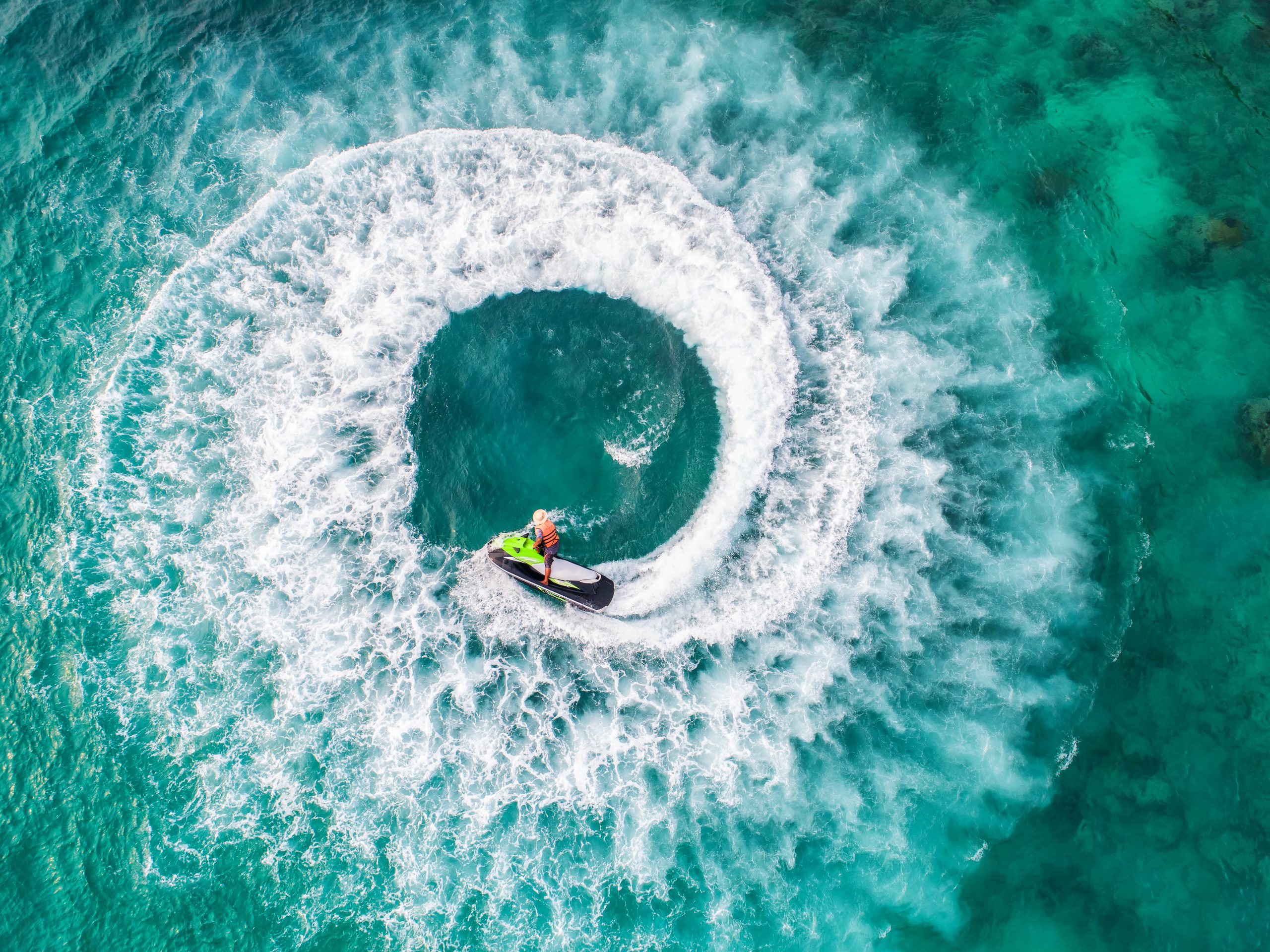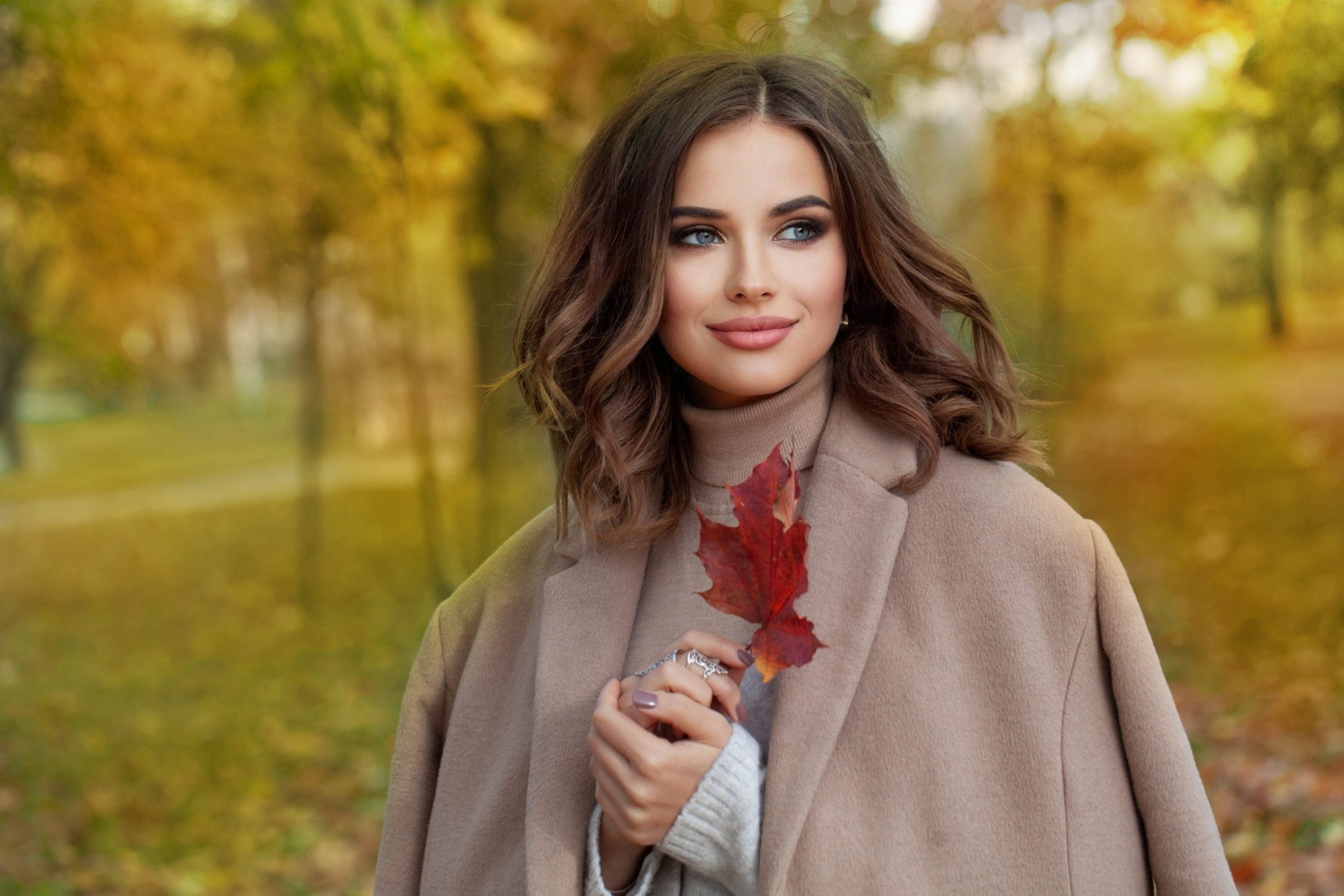
The power of music to transport a listener back to a particular time and place is explored to its literal extreme (garnished with a sci-fi twist) in Ned Benson’s “The Greatest Hits.”
The film tells the story of Harriet (Lucy Boynton) who is in mourning after the death of her boyfriend, Max (David Corenswet). As she processes her grief, she discovers that listening to certain songs transports her back in time to specific moments in their relationship. For much of the film, she’s stuck between trying to relive and change the past, and as she pores through vinyls and Spotify playlists, she hopes that finding the right song will bring her to a moment where she can save Max from dying. Her mission is complicated with the blossoming romance she has with David (Justin H. Min), a member of her support group.
While the film deals with grief and music’s role in processing through it, Benson, Boynton, and Min also wanted to highlight the communal nature of music as well. “[Music] is something that transcends language and cultural barriers. It hits us in a sort of deep and visceral place that I think we all understand,” Min told RogerEbert. This culminates with a standout sequence where on a rooftop, Harriet and David participate in a silent disco across the backdrop of the Los Angeles skyline. It’s a touching moment as we witness two people dancing in discordant rhythm to the same song.
Benson, Boynton, and Min spoke with RogerEbert on a rainy day at the Waldorf Astoria Chicago hotel (pre-interview Boynton joked that she felt right at home given how frequently it rains in London). The trio shared when the know a song will be a mainstay in their lives, filming the iconic rooftop sequence, and about the spiritual and collective power of music.
This conversation has been edited and condensed for clarity.
One aspect that stood out to me about the film is that we’re treated to many scenes where Harriet is “searching” for the right song that will bring her back to a pivotal moment in life. It underscores this process of how a song’s effect on us can be both meticulous and random. For each of you, when you’re listening to a song is there a moment where you say: “I know this song will stick with me and become a part of my lore” or does your love for a song develop more retrospectively or organically? Do you know when a song is going to be a favorite?
Lucy Boynton: It depends on the song, but I think it’s also an instinctive reaction. We were all talking earlier about how sometimes when you hear a song, even if you don’t know who it’s by, it can get right into your bloodstream and bones. The emotional effect can be instant. Sometimes it’s the context and the time, place, or people who are sharing a song or introducing it to you that makes a it stand out.
Justin H. Min: I’m the type of person that when I like a song, I’ll listen to it five thousand times. I’ll hate it, but because I listened to that song so many times in the span of a few days, whenever I listen to it, I really do get transported back to whenever I was listening to that song.
Ned Benson: It’s definitely a bit of both. There are moments where you’re with a song or experiencing a song at a gig or at a concert or something and where it immediately becomes a part of your DNA. There are also moments in life where a song is part of your lived experience and you don’t necessarily catalogue or acknowledge that in the moment. Then later you hear it and are like “Oh my God … this song brings me back to high school, this song brings me back to the moment where I ran across a field to say hi to a girl and embarrassed myself.”
There’s the music and love side to this film but then there’s also this sci-fi, time travel aspect as well. The film takes that adage of “music being an escape” and shows the good and bad of that since Harriet “escapes” to pleasant and unpleasant moments. I’m curious what went into crafting those moments where Harriet is transported into the past. I love how the light sort of shimmers around her, and she begins to blend into the surroundings.
NB: Between our Production Designer, Page, Chung, our DP, and myself, we had a lot of conversations about how to practically create time travel. It came down to lensing, flaring the lens, and whether we wanted to use a body cam or a specific camera dolly with a chair on it to create certain movements. We also wanted to work in concert with actors and incorporate Lucy’s physicality. All of those things converged to create these moments and that distinctive time travel look.
The initial time travel experience we shot was we had Lucy sitting on this rigged chair with wheels where we moved through duvetyn and we were flaring the lens with a flashlight. We used those elements and introduced more of them in post-production. We also wanted to augment the experience of time travel through Harriet’s psychology too.
That’s interesting. So, Lucy, you had a role in helping shape what some of those time travel sequences looked like through the projection of your own emotional state?
LB: I think going in knowing that those scenes were going to be practically done was one of the great appeals of this project. When I first read the script, you obviously assume so much is going to be done with CGI. But to have such a tangible experience in filming those scenes and knowing that I can keep contributing to it rather it being a purely technological performance was exciting.
Speaking of emotional states, this role of Harriet is such a rich one for you, Lucy, because you’re playing her at various points in her life. As viewers we get these little vignettes of what past Harriet was like. What was it like crafting continuity between the past Harriets we see on-screen and her present performance? I’m curious if you filled in a lot of the backstory that we as the audience don’t get to see.
LB: Absolutely. You don’t want dialogue or exposition explaining who she is and we don’t have a huge amount of time in the movie to delve into the past tense. Even with those flashback scenes, it’s present tense Harriet visiting the past. At the same time, you want to offer to the audience an insight as to who she was. Ideally through seeing that contrast, you really double down on how much she has lost and how she has become lost in grief.
I think it came down to finding shortcuts on how to access those past parts of it her. You see some of that in the way she sort of instantly and organically lights up around Max. Then when she’s with David, she’s very vulnerable with and has no façade and is a more mature version of herself, though she’s slightly diluted. It was about finding the temperature changes depending on who she’s interacting with and how those idiosyncrasies give you a fuller picture of who she is now and who she was.
There were also little tools I could play off of thanks to Donni Davey who did the makeup. Donni found really interesting ways to create really interesting looks for Harriet. The various looks of Harriet communicate to the audience that this was someone who was really colorful, excited, and curious and it’s interesting to contrast that with her more muted present tense.

Justin, watching you in this made me think of another project where music played a role which was Netflix’s “Beef.” You play a worship leader, Edwin, in that show and are the one responsible for making Steven Yeun cry. Talk about a scene or show that stirs up people’s emotions and brings people back to a certain time and moment.
JM: (Laughs) He should thank me for all of his awards.
Exactly. I interviewed your brother, Jason, about his experience working on that show and he talked about the interesting spiritual connection with music. He said something funny that when he’s experiencing a powerful worship song or at a retreat he thinks “Okay was that the Holy Spirit or was that just a beautiful chord progression?” He touched a bit on the emotional and spiritual connections we can graft onto music. I’m curious if growing up in church or exposure to religious music impacted your approach to David’s character or shaped your thoughts on the power of music?
JM: Absolutely. I think one of the pillars of why I loved church growing up was the music and worship aspect. There’s something universal about that experience, especially when you experience it as a collective. It really touches your soul. In retrospect, if you were a little cynical, you could say that’s a form of emotional manipulation.
For sure.
JM: On the flipside, I think there’s something there about the uniting power of music. The worship in those spaces mirrors a music festival space in a lot of ways. There’s something very spiritual and universal about music. It’s something that transcends language and cultural barriers. It hits us in a sort of deep and visceral place that I think we all understand. It’s hard for me to even articulate because it’s so abstract and magical in that way.
Definitely. It’s fascinating that as much as music is very much this abstract and magical thing, it has a way of affecting us in an embodied way. All these themes sort of culminate in that standout rooftop sequence where David takes Harriet to a silent disco. Can you all talk more about what filming that scene was like? I know you shot it at the top of an abandoned Sears building …
NB: (Laughs) Not to be confused with the Sears tower here in Chicago. This was the Sears building in Boyle Heights, LA.
JM: (Laughs) I kept calling it the Sears tower too.
(Laughs) Maybe for a sequel you can try to film up on the Sears tower here.
NB: With the locations team, we were trying to find a spot that felt special and unique to Los Angeles but also had some interesting characteristics and scale as well. I was introduced to this abandoned Sears building. The Sears was on the bottom of the building and there’s these old freight elevators that took you to the top of the building. When I got to the top I saw it had this gorgeous view of Los Angeles.
Logistically to make that scene work though, it was close to impossible. One of the elevators broke when we were trying to get equipment up. There were also Covid restrictions so we could only have a certain amount of people go up at time. Then when got to one of the levels of the building, it looked like a horror movie. It was abandoned and dusty and there were pigeons everywhere. I remember thinking “What am I in right now?” But when we actually got the roof it was a special and beautiful night. A fog rolled in and created a really cool light interaction.
Going back to your earlier point about the religious aspect to music, there’s a sacred geometry to music that we all share. I think we all hear a rhythm, and we tap our foot to it. That just is something universal. So, I think in that scene, where we’re watching a group of people in silence, it’s a way to tap into that feeling. We’re all seeing these people experiencing the same song and dance together to it in their own way. That’s beautiful and then there’s another layer where Lucy and Justin’s characters are having a moment and their own private silence in the midst of that.
LB: We were sheltered from a lot of the lugging.
(Laughs) Your job was just to show up and dance.
JM: We were having a great time.
LB: It was so beautiful to be in that setting and to be so high up in Los Angeles and see the full expanse of the city. It just added the magic.
JM: If I remember correctly, one of the first times we experienced everything there was when we walked on set and filmed that scene. What you’re seeing on-screen is our real introduction into that world. For some reason as well, maybe I’m just romanticizing that memory, but it was really quiet that day too. There was a stillness and all you could really hear was the tapping of people’s feet and Lucy and me having our small conversation. Los Angeles is not usually that quiet.
NB: The extras were actually listening to music. It was all being DJed by our composer, Ryan Lott. If you watch that scene, it’s a sort of Where’s Waldo moment where you can try and spot him in the back corner. It was a fun night.

I’d love to hear about some of the music choices you made as well in this story. What was it like to balance the narrative needs of the story with the songs you wanted to include?
NB: All of the music choices were lyrically helping tell the story or subtext of each scene. We were looking at songs that really helped each scene and contributed to the narrative. If you listen closely to the lyrics, they’re helping the story move along and helps you understand what each of the characters, particularly Harriet, is going through.
In the pre-production process, it was really fun because all three of us were sharing music with each other and sharing our own musical tastes. I’d share a playlist that I thought represented David to Justin etc. and then all of them would send back playlists that were personal to them. There was this dialogue of music that was happening between us. Another part of this was that the cast would come on Saturday nights for dinner. We’d sing karaoke. They had to sing a song and then they could go home.
(Laughs) That was the prerequisite to leave.
JM: (Laughs) Yeah, he locked the door as soon as we came in.
I know that you’re a fan of Leon Bridges, Lucy. Justin, you’ve named that Green Day and Beach House are some artists that can bring you back to a certain moment in time. Did you get any input about what songs got to go in the script or were you happy that certain songs made it in there?
JM: I am happy a Beach House song is in the film. There ended up being a lot of songs that we love in there.
NB: Lucy’s emotional connection to “Loud Places” by Jamie xx was pretty profound. We could play that song on set and she was good to go.
LB: That is really shocking and is such an articulation of the power of music, to be a complete cliché about it. It really is such a trigger song for me. So thanks, Jamie.




